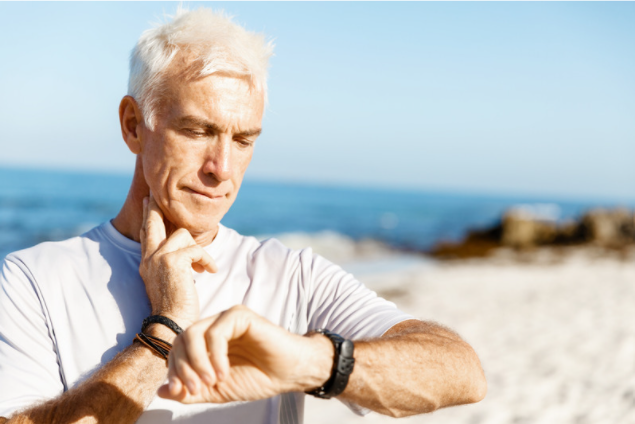This “e-rehabilitation” thing…
From TRAK we could not resist writing a post about applications for physiotherapists to shed some light on this little world so unknown but at the same time beautiful and extraordinary that offers the incorporation of the latest technology to an environment as apparently analog as ours.
As we have already talked about in other posts or commented in our latest events, digitalization is here to stay in the field of healthcare. One of the most representative signs of this fact is the appearance in the different online markets of health apps for any clinical area, from those that are linked to digital bracelets and monitor our heart rate to anatomical maps that help professionals and students to locate the Willis polygon in the organism.
After reading this post, your smartphone will become the best substitute for your goniometer and reflex hammer because, honestly, there are apps for all tastes and colors. So go ahead and open google play (or apple store) because we are going to tell you what you can find out there.
Health applications, a small portable hospital
With no intention of advertising but with an informative spirit, we will tell you what types of health apps you can download and how to classify them.
Apps linked to wearables
Wea…What? We may have gone a bit too far with this term but if you’re a bit of a techie (or an apple fan) you’ll know what we mean to any digital device that is “wearable” or “wearable”.. That is, bracelets, watches, glasses or, in a more clinical setting, sensors capable of analyzing and reading parameters of our organism.
The vast majority of this type of gadgets include their own application and usually incorporate accelerometers and detectors capable of reporting the degree of physical activity of the user, monitor their rest when sleeping, their heart rate (even issue alerts in states of arrhythmia) or detect if they have fallen to the ground, which would have interesting applications in the geriatric field.
These applications the most eye-catching or eye-catching digital health referent by the simple fact that its use is widespread among the general population, even if only as an anecdotal tool.
Many projects have brought this type of technology into the clinical setting, ensuring patient monitoring in hospital and home practice. Its biggest drawback? Acquisition of the device.
Fully digital apps
In fact, there are also applications that do not require a physical device to operate and which may be the most interesting from an affordability point of view.
Most of them are medical reference libraries, atlases or directories that include clinical guidelines and protocols that can be accessed at the click of a button and that are very useful for healthcare professionals when performing a quick search for information or studying.
We can also find applications for practice or clinic management that help professionals organize their daily tasks, their patients and link relevant information to their treatments.
Then there are those applications that function as diagnostic and/or treatment tools, and which incorporate functionalities that make it possible to establish a clinical conclusion about a pathology or to take part in the patients’ own treatment. Our platform would be located in a group, TRAK.

So what about applications for physical therapists?
After this quick presentation on the use of applications in the health field, it is time to talk about digital physiotherapy, as befits our sector.
There are many applications that have been launched as useful tools in physiotherapy and that also constitute an interesting contribution to digital rehabilitation!
Have you ever imagined yourself carrying a “Prometheus” or a “Sobotta” while treating your patients? Maybe the one who would need a treatment would end up being you. Well, there are applications like AnatomyLearning o VisibleBody that are very useful when it comes to learning (or memorizing) anatomy.
There are a number of applications with which to learn ultrasound and even dry needling approaches such as BlockGuruor digital goniometers such as Goniómetro Pro.
As you can see the range is quite wide and the possibilities are many.
What about those that play a role in treatment?
With the pandemic, the number of solutions that appeared to solve the issue of tele-rehabilitation, remote treatment, etc., skyrocketed making it evident the need for a digital work model in physiotherapy that was not limited to the use of tools, but that implemented a methodology.
In this context was born our TRAK application, a digital physiotherapy solution for therapeutic exercise prescription and remote patient monitoring.
But, what are the main features to look for in digital physical therapy software?
It was at our last TRAKEVENT that this question was answered.
Raquel Delgado: the 3 ‘must-haves’ of rehabilitation software
At the round table that we convened last February, we had the pleasure of having Raquel Delgado, an expert in chronic pain.
His expertise in digital physiotherapy and in the use of software and applications for physiotherapists like ours, made his contribution to the event more than relevant. In his speech, he summarized in 3 fundamental aspects for a software of these characteristics:
- A complete exercise library and to allow the incorporation of own exercises.
- A chat that allows the transversal communication between physiotherapist and patient.
- The ability to monitor the patient during the exercise.
We must tell you that we couldn’t help but smile when we heard him mention the 3 main features that TRAK has.
But you don’t have to take our word for it! You can listen to it in the following video:
Health apps represent an unquestionable advance towards the digitalization of the sector that is also materialized in the field of physiotherapy with apps like ours. We invite you to try the ones we have mentioned and, of course, to request ours by filling in this form simple form!